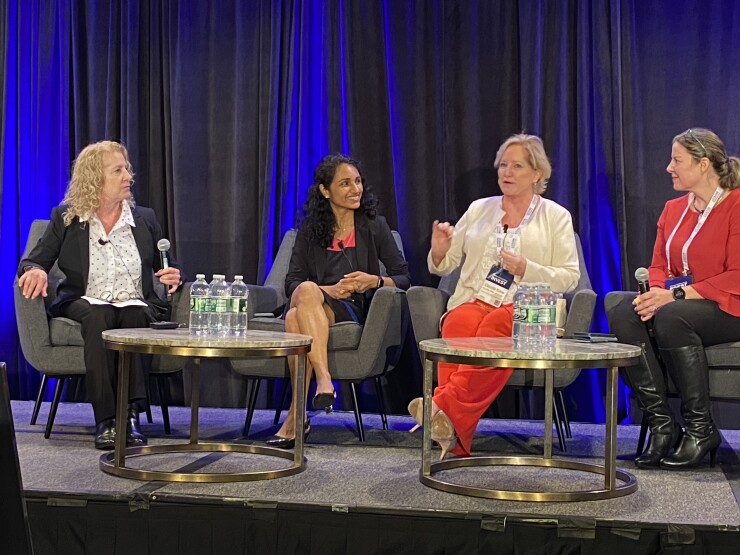Wealth management technology can help financial advisors reach the next generation of clients, expand their base of customers and provide more customized services.
That was the main takeaway of a discussion at the
Joseph rejected the idea that there's a dichotomy between choosing to embrace technology or focusing on building personal relationships with clients. For example, her firm's meeting assistant service helps advisors prepare for meetings by reminding them of the name of a household's pets or other topics that came up in previous interactions.
"We acknowledge that it is a relationship-based business, but I think what the missing link is how technology can enable this personalization," Joseph said. "You're not really intersecting the technology in between the meetings, but providing all the necessary confidence to allow you to perform better at the meeting, to create that personal relationship. So I think we have to kind of think of both of these in terms of, how can one complement the other?"
Technology tools can slash valuable minutes or hours off tasks, clearing the way to spend more time with clients, according to Francis, who's also the founder of a pro bono planning service for women called
"We need to be technology firms [and] offer wealth management and unbelievable boutique experience and hand-holding. It's not between what you're doing now and technology. It's using technology to give yourself the space in the day to make that phone call," Francis said. "Embrace this technology, because it allows you then to have the time to have that very bespoke, very deep relationship with your clients."
With advisors
Kane mentioned an older client whose health has declined but is talking regularly with her and his three children in different parts of the country.
"The convenience of technology is helping me connect better with the second and third generation," Kane said. "And that's where the money is going to be going. So it's going to be coming from my 80- and 90-year old clients and going to their kids and their grandkids. I have a much better retention of second- and third-generation clients now because of technology."
Francis said she aims to find the efficiencies necessary to reduce the minimum investable assets for clients of her firm while still driving a profitable business. Currently, her staff of 18 people "would be overwhelmed" if the required assets went below their current number of $2 million per household to her goal of $1 million, Francis said. But technology could lessen the cost of each client, she pointed out.
"Bringing a family member to the family, you can't just show them where the bedroom is and not invite them for meals," Francis said. "So my hope is that you can bring really wonderful financial planning and wealth management to individuals that maybe are priced out of the market, that desperately need us even more."
The tools carry the potential for the industry to offer the same level of service to women and younger investors that it does for more other clients, Joseph said.
"Even for millennials or people who are traditionally not thought of as the main client, I think the industry somehow has left them out of the process of capturing, how do you kind of customize these services for them?" Joseph said. "How do you even find the right advisor for them? So I think these questions are still open questions that are out there."








